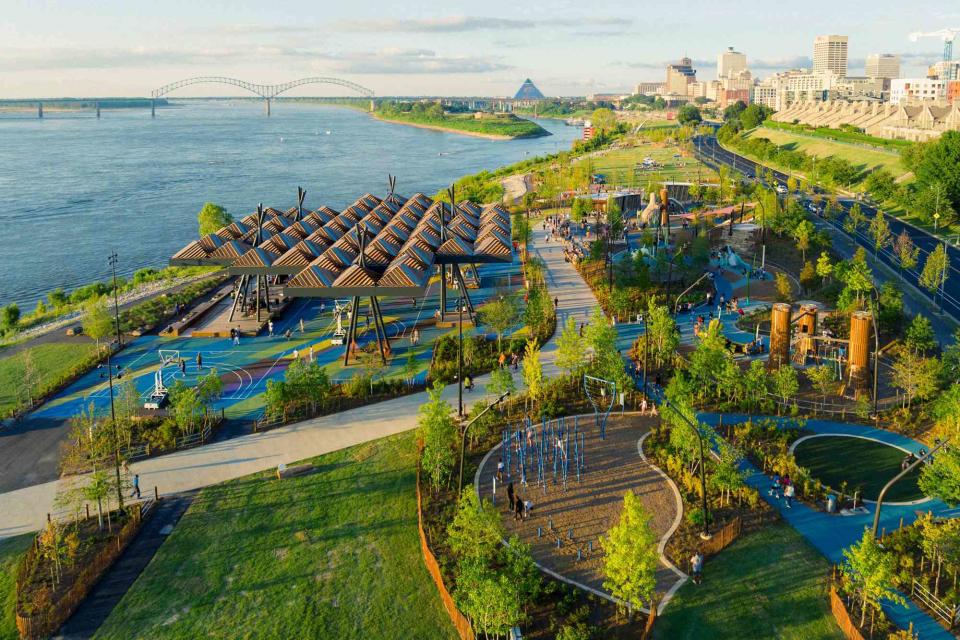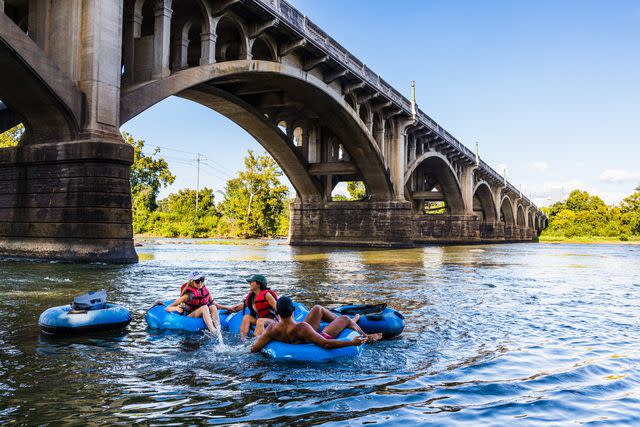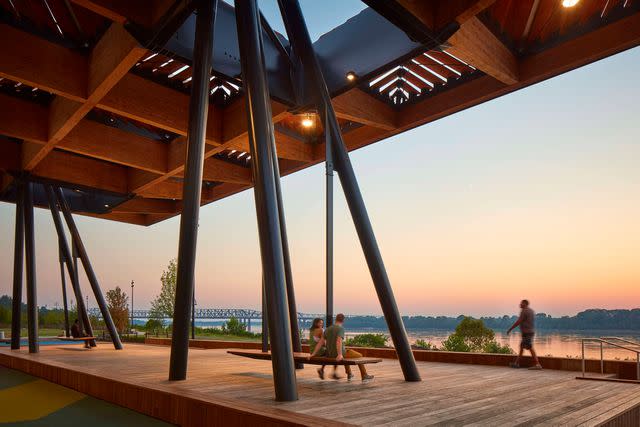How to Explore These 4 American Cities on Their Scenic Waterways
Across America, urban rivers are getting an upgrade. Here's how to get out on the water.

During a recent paddle on Indianapolis’ White River, I was struck by how peaceful my surroundings were. A curious fish swam through the clear water up to the kayak, only to dart away before my next stroke. A great blue heron stood at alert near the bank, scanning the river for its next meal. Despite living here for more than two decades, I was able to experience neighborhoods I thought I knew in an entirely new way.
Until recently, the White River was so polluted with sewage runoff that few people would be willing to get out on the water. An EPA investigation in the early 2000’s forced Indianapolis to fix the issues, including by building an underground tunnel to divert waste away from the river. That project was completed in 2021, and with the waterway now cleaned up, Frank’s Paddlesports Livery opened along the riverbank earlier this year, allowing people to rent canoes, kayaks, and paddleboards.
Indianapolis’ story isn’t unique — as Americans yearn for more outdoor opportunities, cities across the nation have turned their attention to their long-neglected rivers. Here are three other places to explore by water.

Columbia, South Carolina
Columbia is located at the confluence of the Broad, Congaree, and Saluda rivers. But for decades, residents had little, if any, public access to the waterfront. When the Three Rivers Greenway was designed, it included not only trails but also boat ramps and footpaths for people to enter the water. Today the 15-mile greenway is a hub of activity, including fly-fishers casting in shallow pools and college kids floating downstream in inner tubes. The path will eventually connect to other attractions in the city, including the Riverbanks Zoo and the South Carolina State Museum.
Memphis, Tennessee
In 1925, a Memphis man named Tom Lee saved 32 people who had fallen into the Mississippi River from a capsized steamboat. (Even more extraordinary? Lee could not swim.) The hero is memorialized in the 30-acre Tom Lee Park, which reopened in September after a $61 million renovation. More than 1,000 trees and 15,000 other native flora were planted, and walking paths, a lounge deck, and an outdoor fitness zone were added. A playground with large-scale replicas of animals native to the Mississippi, including otters and salamanders, was also constructed.

Oklahoma City, Oklahoma
For decades, the seven-mile stretch of the Oklahoma River that runs through the city was silent. But today, the sounds of crashing whitewater and screams of delighted rafters echo throughout Riversport OKC, a sports complex. After major flooding during the 1920s, the city turned the waterway into a drainage ditch. It wasn’t until the turn of the 21st century that the river flowed again, with the creation of three small locks that create Class III to Class IV rapids. The complex has even become an official training site for the U.S. Olympic and Paralympic rowing teams.
A version of this story first appeared in the February 2024 issue of Travel + Leisure under the headline "Currents of Change."
For more Travel & Leisure news, make sure to sign up for our newsletter!
Read the original article on Travel & Leisure.


